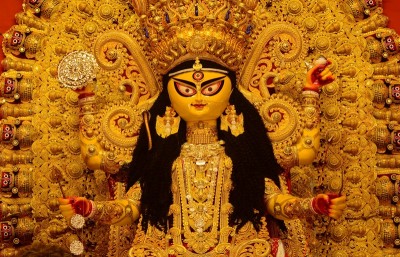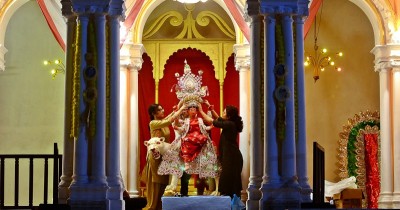 Vinod Daniel
Vinod Daniel
I can see the Indian museum sector making great strides over the next decade: Vinod Daniel
India Vision Institute's CEO and veteran museum expert Vinod Daniel hopes to see the Indian museum sector make great strides in the coming decades. IBNS correspondent Supriyo Hazra discussed the future of museums and how he plans to continue his philanthropic works with IVI in future. Excerpts
Congratulations to you on receiving the high Australian honour, OAM (Order of Australia Medal). It truly reflects on your achievements and successes across the world, including here in India.
Thank you so much for your kind words. I was delighted at the recognition, and at the same time, it was also most humbling. This will encourage me to continue to work and do my best in whatever I do.
You have had an impressive career in museums in the US, Australia and around the world, how do you find the time to focus on your work in philanthropy, through India Vision Institute (IVI)?
About 15 years ago, I made a conscious decision to spend a part of my time pro bono in philanthropic work in India, which is how India Vision Institute was born. Over the years, it has undertaken meaningful and impactful work across India and is growing. It is rewarding to see how a small intervention in Public Health (Vision correction) can have so many positive benefits to individuals especially urban poor and rural Indians.
You began your educational career with a B.Tech degree in Chemical Engineering from the Indian Institute of Technology (IIT), Delhi and later a postgraduate degree from IIT Madras. How did you venture into museums and preservation?
The degrees gave me a strong foundation in science. This helped in my career in the museum sector where my Science formed the core of my work as a conservation scientist in my first job at the Getty Trust and the Australian Museum. One of my first projects that I worked involved preservation of Egyptian mummies through specially designed cases.
Given your varied experience in over 50 countries, what do you feel is the prospect for the museum sector in India?
It is very promising and I can see the sector making great strides over the next decade. India has one of the richest collections (heritage) in the world. Going forward, the big focus ought to be a stronger involvement and support from the Government, foundations and HNIs.
With India's rich and diverse heritage, don't you think a lot more needs to be done for the museum sector?
Yes. It takes time. Any major changes in the museum sector to fully develop would take between two and three decades. Look at Singapore where over a twenty year period they have transformed the sector. But we have started the process. A strong strategy (both national and state) in place to ensure that we get there is very important.
Nowadays, the role of technology comes up in conversations. Your take on this?
Technology is great, but it needs to be a tool in interpretation, and not drive it. Technology for the sake of technology is not what a museum should do. But it should be an enabler for better storytelling and access.
Coming to India Vision Institute and of your work in eye health, the organization recently touched the one-million-mark in vision screenings. How big a challenge is public eye health in India?
There are several challenges, including the high incidence of myopia (leading to distance-vision problems in school children) and near vision issues among older adults. All these affect the quality of life, ability to get a good education, productivity and income earning capability. A pair of glasses may be all that stands between a child completing school or not as well as an adult not sliding into poverty but making a living and supporting their families.
If I were to ask you about the two main challenges or impediments in universal eye health access, what would these be?
For urban poor and rural Indians, the challenge of access is there, and the government with its infrastructure would have a bigger role to play. Often, it is awareness (that they can’t see well) and access (where do I go to get vision checked) are the two main impediments, rather than the cost.
Support Our Journalism
We cannot do without you.. your contribution supports unbiased journalism
IBNS is not driven by any ism- not wokeism, not racism, not skewed secularism, not hyper right-wing or left liberal ideals, nor by any hardline religious beliefs or hyper nationalism. We want to serve you good old objective news, as they are. We do not judge or preach. We let people decide for themselves. We only try to present factual and well-sourced news.







